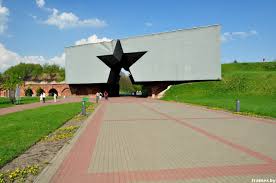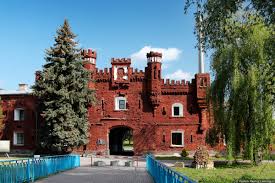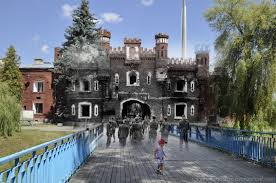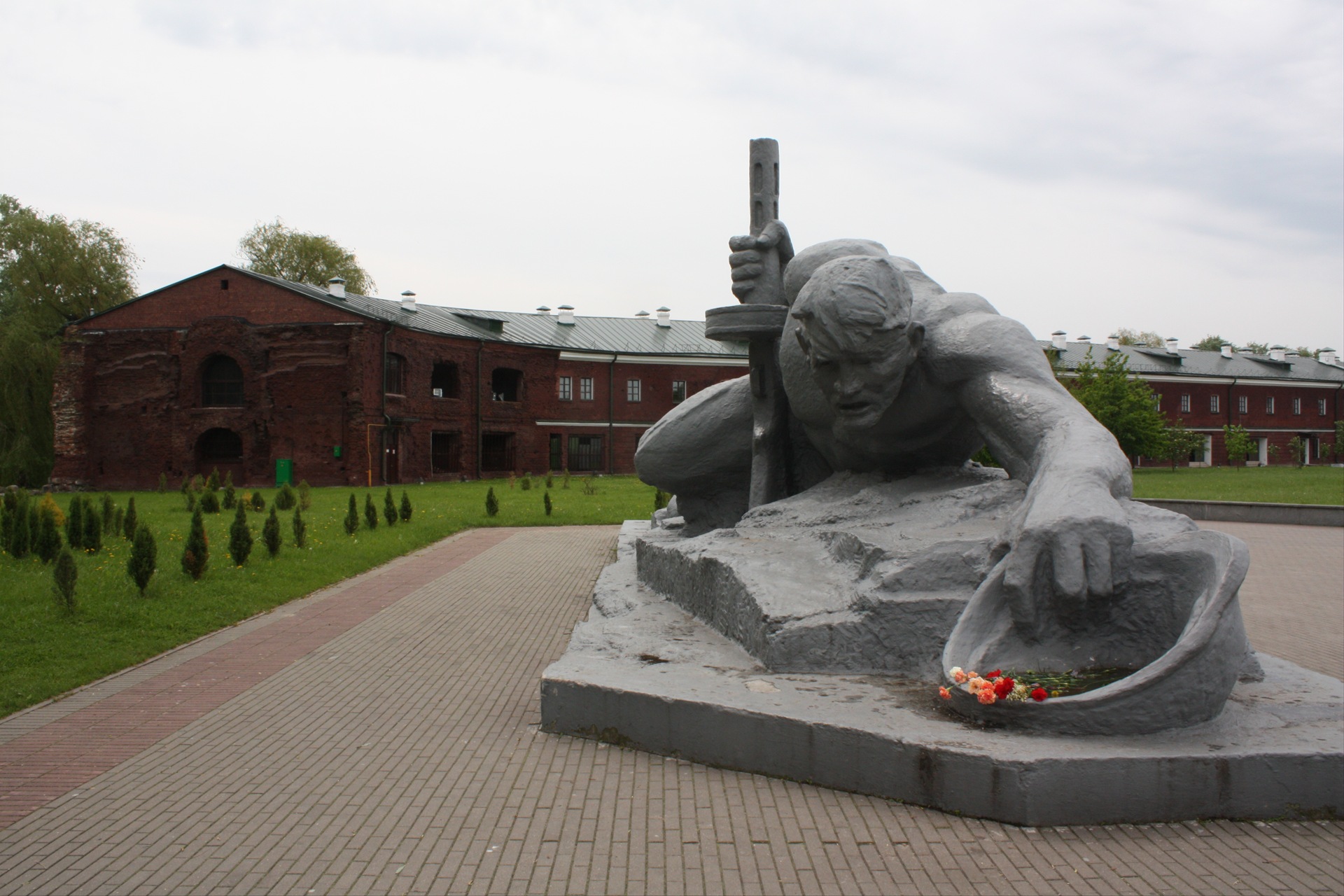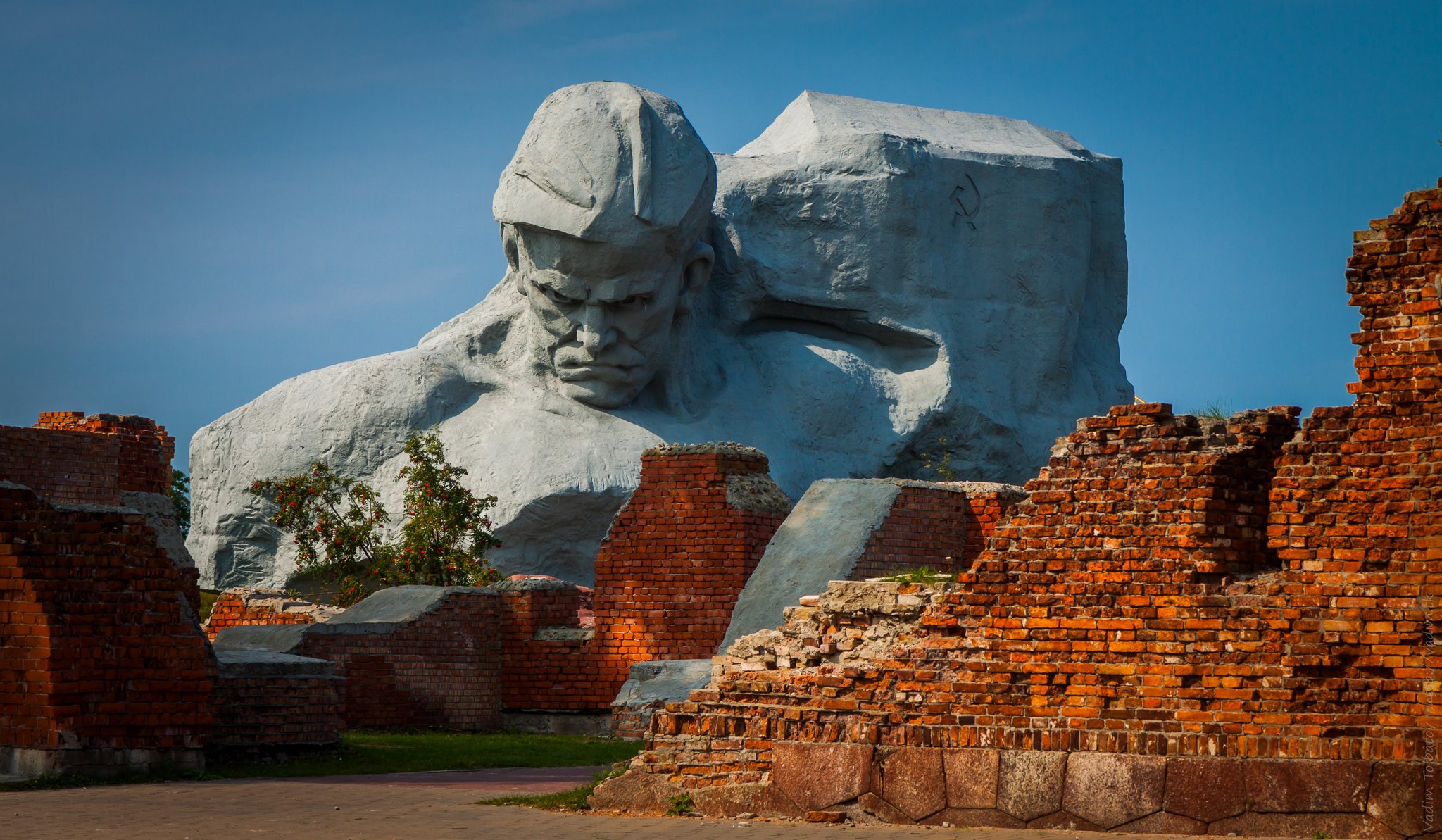Brest Fortress, formerly known as Brest-Litovsk Fortress, is a 19th-century Russian fortress in Brest, Belarus. It is one of the most important Soviet World War II war monuments commemorating the Soviet resistance against the German invasion on June 22, 1941 (Operation Barbarossa). Following the war, in 1965 the title Hero-Fortress was given to the Fortress to commemorate the defence of the frontier stronghold during the first weeks of the German-Soviet War. It was then part of the Byelorussian SSR. The title Hero-Fortress corresponds to the title Hero City, that was awarded to an eventual total of twelve Soviet cities. Brest Fortress is situated at an height of 135 meters.
The Brest fortress has sustained its original outline of a star shaped fortification since its construction in the early 19th century. The Citadel, the core of the fortress, was on the central island formed by the Bug River and the two branches of the Mukhavets River. The island was skirted by a ring of a two-storied barrack with 4 semi-towers. The 1.8 km long barrack comprised 500 rooms to accommodate 12,000 soldiers within thick walls built from super strong red bricks. Originally there were 4 gates to enter the Citadel. Today only Kholm Gate and Terespol Gate can be seen, most part of the barrack lies in ruins.
The Citadel was surrounded by 3 fortifications as bridgeheads, that were made up by branches of the Mukhavets River and moats (ditches), fortified by earthworks 10 m high with redbrick casemates inside. The 3 fortifications were named after two towns: Kobrin in Belarus, Terespol in Poland and Volyn, a region in the Ukraine. The Kobrin Fortification was the biggest in the fortress, located in the northeastern part, shaped like a horseshoe, featured 4 fortification curtains, 3 detached ravelins and a lunette in the western part, East Fort and West Fort. The Terespol Fortification was the western bridgehead, featuring 4 detached lunettes. The Volyn Fortification was the southeastern bridgehead, featuring 2 fortification curtains with 2 detached ravelins.
A ring of outlying forts was built later around the old citadel. As the post-1945 border along the Bug river runs through the fortress area, many of the fortification works are now in Poland, around the town of Terespol.
A stretch of the rampart on the Kobrin Fortification by the contemporary Main Entrance to the War Memorial
This site was added to the UNESCO World Heritage Tentative List on January 30, 2004, in the Cultural category.




